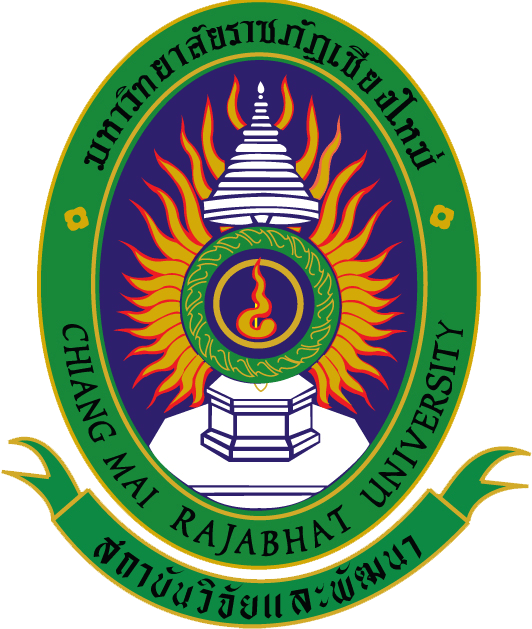
ระบบสารสนเทศงานวิจัย สถาบันวิจัยและพัฒนา มหาวิทยาลัยราชภัฏเชียงใหม่
Research Information System(RIS)
Indigenous Traditional Dance: An adaptation From Ritual Sacred Dance to a Tourism Entertainment Art and Performance: Comparative Study Between Thailand and Malaysia.
วิระสันต์ มุกดาสกุลภิบาล
คณะมนุษยศาสตร์และสังคมศาสตร์
คำสำคัญ :
เลขทะเบียน :
1503-64-HUSO-CMRU
บทคัดย่อ
งานวิจัย การแสดงวิถีชีวิตชนเผ่า: การปรับปรนวิถีชีวิตชาติพันธุ์ชาวม้งแม่สาใหม่สู่การแสดงเพื่อการท่องเที่ยว ศึกษาเปรียบเทียบระหว่างประเทศไทยและประเทศมาเลเซีย มีวัตถุประสงค์เพื่อศึกษาบทบาทการแสดงวิถีชีวิตชนเผ่าม้ง บ้านแม่สาใหม่ เปรียบเทียบบทบาทการแสดงวิถีชีวิตชนเผ่าม้ง บ้านแม่สาใหม่ กับชนเผ่ามาเมรี ในประเทศมาเลเซีย และศึกษากระบวนการปรับปรนการแสดงตามวิถีชีวิตของชนเผ่าม้ง บ้านแม่สาใหม่กับชนเผ่ามาเมรี งานวิจัยนี้เป็นงานวิจัยเชิงคุณภาพ ผู้วิจัยเก็บข้อมูลโดยการศึกษาเอกสารที่เกี่ยวข้อง การสังเกต การสัมภาษณ์ และการบันทึกวิดีโอ ผลการวิจัยพบว่า การแสดงของชนเผ่าม้งแบ่งออกเป็น 7 ชุดการแสดง คือ การเป่าเค่ง การร้องเพลงม้ง การเป่าแน การเป่าลิ่มทองเหลือง การรำดาบ การเล่นลูกข่าง และการเป่าใบไม้ ส่วนการแสดงของชาวมาเมรีมีชื่อว่า มายินโจโอ (Mayin Jo-oh) ซึ่งเป็นการเต้นรำทางพิธีกรรมเพื่ออธิษฐานขอพรจากดวงวิญญาณศักดิ์สิทธิ์ การแสดงทั้งสองชุดมีบทบาทในการช่วยส่งเสริมการท่องเที่ยวเชิงวัฒนธรรมของชุมชน และช่วยอนุรักษ์วัฒนธรรมของกลุ่มชาติพันธุ์ ทำให้เกิดการรื้อฟื้นวัฒนธรรมที่ถูกละเลยไป อย่างไรก็ตามในขณะที่การแสดงของชาวม้งเป็นการจำลองวิถีชีวิตในอดีตเพื่อส่งเสริมการท่องเที่ยวเท่านั้น การประกอบพิธีกรรมของชาวมาเมรีเป็นการประกอบพิธีกรรมที่ยึดโยงกับความเชื่อทางศาสนา ด้วยเหตุนี้ พิธีมายินโจโอจึงมีการปรับปนตามอิทธิพลของนักท่องเที่ยวน้อย แต่การแสดงของชาวม้งปรับปนอย่างเห็นได้ชัด มีการเขียนเนื้อเพลงให้สื่อสารกับแขกผู้มาเยือน และมีการปรับเวลาการแสดงให้กระชับ
Abstract
Indigenous Traditional Dance: An adaptation From Ritual Sacred Dance to a Tourism Entertainment Art and Performance: Comparative Study Between Thailand and Malaysia, were as follows: to study the roles of ethnic shows of Hmong people in Ban Mae Sa Mai, to compare the roles of ethnic shows of Hmong people in Ban Mae Sa Mai and the ritual dance of Mah Meri people in Malaysia, and to study the process of changing ethnic shows of Hmong people and the ritual dance for tourism. It was a qualitative research. The researchers collected data by consulting related documents, observing, interviewing and recording. The findings showed that the ethic shows of Hmong people consisted of 7 shows: keng (Hmong khene), Hmong music, nae (Hmong khlui), brass whistling, sword dancing, tops and leaf whistling. For Meh Meri people, they did a ritual dance called Mayin Jo-oh in order to make a prayer to scared spirits. Both of these shows helped promote cultural tourism for the communities. They encouraged the preservation of ethnic cultures and led to the revival of some of them. Nevertheless, while the shows of Hmong people imitated ethnic practices in the past to exclusively support tourism, Mayin Jo-oh was closely related to religious belief. As such Mayin Jo-oh was not significantly influenced by tourism. On the other hand, there were notable changes in Hmong shows due to tourism. Lyrics of Hmong music were written to address visitors. The time durations of the shows were also shortened.
ไฟล์งานวิจัย
ข้อมูลการตีพิมพ์
ชื่อบทความ :
แหล่งที่ตีพิมพ์ :Journal of Tourism, Hospitality & Culinary Arts (JTHCA) 2022, Vol. 14 (3) pp 134-151
ปีที่ตีพิมพ์ :2565
3 07 ต.ค. 2564
กองทุนวิจัย มหาวิทยาลัยราชภัฏเชียงใหม่
202 ถ.ช้างเผือก ต.ช้างเผือก อ.เมือง จ.เชียงใหม่ 503000
053-88-5555